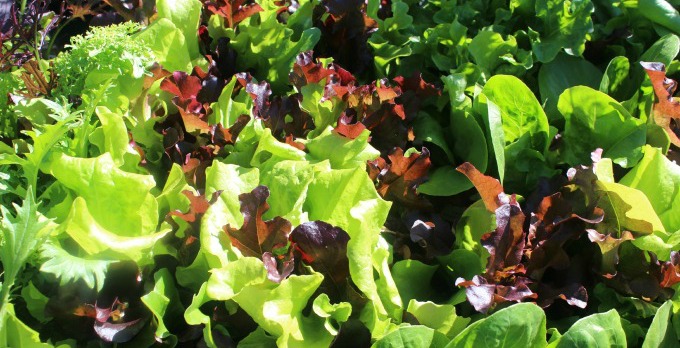Your body loves green food. Why?
Chlorophyll is what gives green foods their color and is considered to be the “blood” of plants. In fact, the molecular structure of chlorophyll is similar to that of the hemoglobin in our blood. The difference lies in the fact that hemoglobin revolves around iron and chlorophyll revolves around magnesium. “Therefore, when you eat plants in their living, unheated state, the chlorophyll actually feeds oxygen to your body. Cooked food does not contain this organic type of oxygen. This is why, when you eat lots of greens or drink wheatgrass juice, you immediately feel a surge of energy. Wheatgrass is an especially good source of oxygen.” (Susan Schenk, The Live Food Factor.)
In its natural state, chlorophyll is fat-soluble and readily absorbed by the body. This is in contrast to some of the more water-soluble liquid chlorophylls on the market, which are better for skin rashes and body odor.
Chlorophyll has been shown to counteract the effects of radiation and bind to heavy metals and other toxins in the body. In addition, chlorophyll has strong anti-fungal and anti-bacterial properties.
It makes sense that greens are a healthy addition to any diet.
Here are a few suggestions for incorporating greens:
1. Green Juice
A good beginning green juice is romaine lettuce, celery, and cucumber. Slowly incorporate greener foods like chard, parsley, kale, and any other leafy greens. Add lemon or lime to help with taste. If I have some particularly bitter greens in the juice, I offer it as a challenge to my younger kids and then praise them for their bravery.
My favorite swiss chard combination can be found here.
2. Green Juice Pulp
I take the pulp and store it in the refrigerator. We use it in stir-fries and mix it into meatloaf, meatballs, or sausage. (This is why grass-fed beef is so critical. If the animals eat lots of chlorophyll, so do we!) Granted, some of the nutritional content is lost, but not all of it. The pulp can be food-processed with soaked flax seeds. Add salt and other spices and dehydrate them.
3. Spirulina
Micro-algae in general is an excellent source of chlorophyll. Spirulina in particular contains over 100 nutrients, including beta-carotene, iron, copper, manganese, selenium, zinc, trace minerals, gamma-linolenic acid (GLA), vitamin E, vitamin D, vitamin K, and vitamin
B-12 and other B vitamins.
One interesting note in light of the current crisis in Japan: In 1994, a Russian patent was awarded for spirulina as a medical food to reduce allergic reactions from radiation sickness. Research showed that 5 grams of spirulina a day for 45 days lowered radionuclides by 50% and normalized allergic sensitivities.*
There are many sources of this nutrient. I like the Nutrex Hawaii brand available in powder or tablet form.
*More information here.
4. Chlorella
Chlorella is another algal food containing a little less protein than spirulina but twice the nucleic acid and chlorophyll. In order for the nutritional value of Chlorella to be realized, the cell wall must be broken down to make it digestible. There are questions concerning the final quality of its nutritional content when Chlorella is processed in any way. We like the Chlorenergy brand.
5. Liquid Chlorophyll
This is my favorite! Typically extracted from alfalfa, which is a natural source of silicon and chlorophyll, the liquid is easy to take and, when flavored with mint, actually pleasant tasting. I buy the NOW brand found here.
Whether fresh or supplemented, greens makes a great addition to any diet!







Thank you for this article. I’m so glad to know about chlorophyll’s toxin binding and anti-fungal properties. I am adding spirulina and chlorella to my list and hope to try wheat grass soon too!
Thanks for sharing these great tips! I love the idea of using the pulp in meatballs/meatloaf too!!